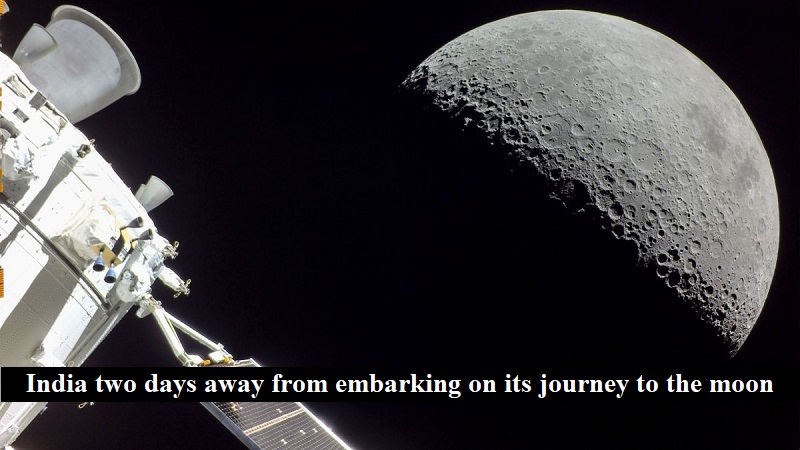
In just two days, India will embark on its journey to the lunar surface with its third lunar mission, Chandrayaan-3. What was once a dream for some scientists has now become a source of pride for the people of the country. The historic moment will take place on July 14th when the Launch Vehicle Mark-III will carry the Chandrayaan-3 lander and rover to the surface of the moon.
The moon has always captivated scientists, philosophers, space enthusiasts, and the general public alike. Numerous attempts have been made in the past to reach the moon and explore the possibility of life on its surface. Of particular interest to science enthusiasts is the moon’s South Pole, which represents the southernmost point on the lunar surface.
The lunar South Pole has drawn the attention of scientists due to the presence of water ice in permanently shadowed areas. The craters on the lunar South Pole are unique in that they are shielded from sunlight, which creates a fascinating environment for scientific exploration.
NASA suggests that some craters in the moon’s South Pole have not received sunlight for billions of years, resulting in extremely cold temperatures as low as -203 degrees Celsius. These craters serve as cold traps, preserving a record of hydrogen, water ice, and other volatile substances from the early Solar System. The matter trapped in these southern lunar regions has likely remained unchanged over time, potentially holding vital clues about early life.
Given these factors, the southern lunar pole presents an intriguing prospect for scientific investigations. Several nations have explored or attempted to explore this specific region on the lunar South Pole.
In 2008, ISRO (Indian Space Research Organisation) developed the Moon Impact Probe (MIP), which successfully crash-landed near the rim of Shackleton Crater, an impact crater in the lunar South Pole. With this achievement, India became the first nation to make a hard landing or impact on the lunar South Pole.
India’s second lunar mission, Chandrayaan-2, launched in July 2019, aimed to softly land on the south polar region of the moon. Unfortunately, the lander lost communication and failed to land safely, stopping just 335 meters from the ground.
With the upcoming Chandrayaan-3 mission, India will once again attempt a soft landing on the lunar South Pole, continuing its quest for lunar exploration.

Post Your Comments